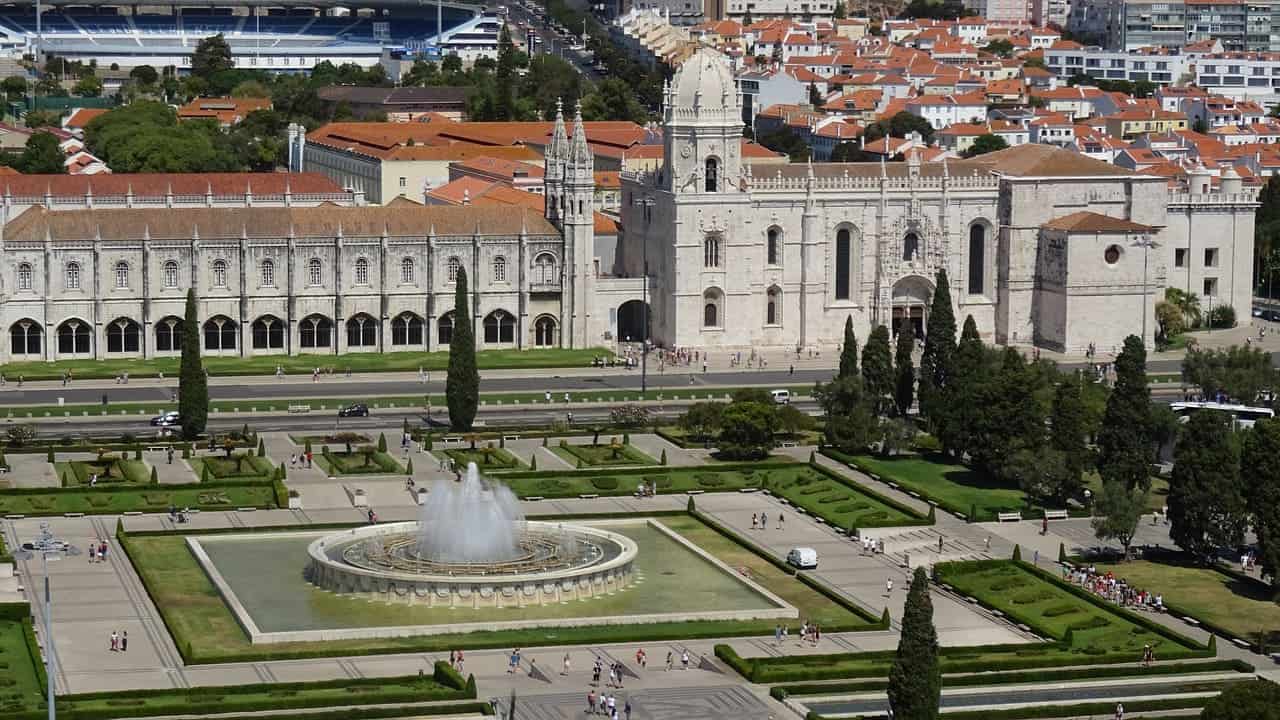Jerónimos Monastery (pt. Mosteiro dos Jerónimos) is a massive religious complex located in Lisbon’s Belém district on the Tagus coast. The building became a symbol of the power of the powerful during the era of overseas territorial expansion, coinciding with the end of the Renaissance. Today, the monastery is considered one of the wonders of Portugal.
The monastery is built in the Manueline style, like the Belem Tower that guards access to the city, or the Order of Christ in nearby Tomar. The style is named after the Portuguese king who began the construction of the temple – Manuel I called Lucky.
History of the construction of Jerónimos monastery
Once upon a time there was a small and quite ordinary village near Lisbon, Restelo. When Portugal became a kingdom with borders extending beyond the oceans, this unassuming village suddenly became an important port for transshipment and trade. On the coast of the Tagus River, in the Belém district, today stand buildings that are permanently etched in the consciousness of the Portuguese. Where did it all begin?
Construction of the monastery complex was begun by his edict by King Manuel I as early as 1496. One of the main reasons why the monarch decided to make such a large investment was the desire to erect a pantheon worthy of the ruler. A secondary consideration is most likely the need to give thanks for Vasco da Gama’s successful overseas expeditions, which solidified Portugal as a representative of the thalassocracy. The first limestone blocks of a type of stone called lioz were erected in 1501, however, it is difficult to establish a clear date for completion.

The monastery contains, among other things, the tomb of Vasco da Gama
This is mainly due to the fact that the construction was overseen by at least several prominent architects of the time, who changed individual details in the body of the building and the surrounding cloisters until 1600. The monastery eventually became one of the most expensive architectural structures in Europe during the Renaissance era. Most of the investment amount was covered by a special five percent tax on spices brought to Portugal from the Indian colonies.

Tomb of Dom Henrique in the Church of St. Mary in Hieronymite Monastery
However, it can be said with confidence that it was 1604 when the monastery was declared the resting place of kings. The complex survived in its entirety the devastating earthquake in 1755, which consumed much of Lisbon. Only a small section of the upper choir collapsed, which was quickly rebuilt. Manuel I decided to settle a Hieronymite order in the built temple, which was to pray for the king’s soul and provide spiritual support for Portuguese sailors exploring new continents. The order eventually cared for the monastery until 1833, at which time the religious brotherhoods were expelled from Portugal. Between 1833 and 1940, the Hieronymite monastery housed an… an orphanage and a school.
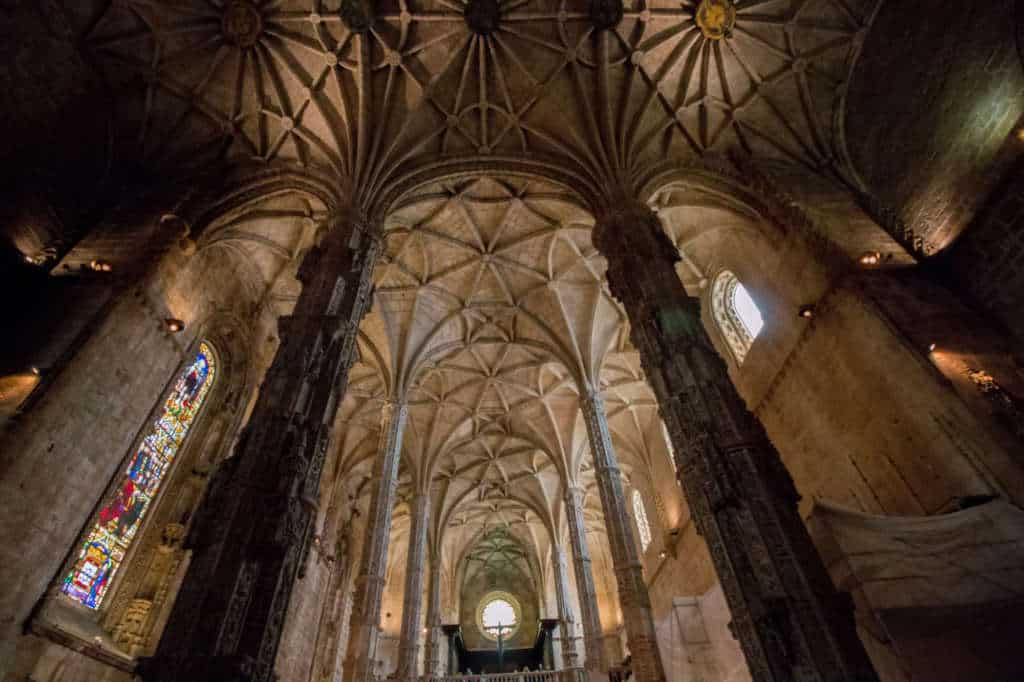
As of May 6, 2016, the Hieronymite Monastery has the status of a national pantheon in which will be deposited “Portuguese citizens who have distinguished themselves through services rendered to the country, the performance of high public office, military service or who have supported the expansion of Portuguese culture in literary, scientific and artistic works.”
Architectural details of buildings Jerónimos Monastery
Church of the Virgin in Belém
The entire complex is characterized by features unique in the world. The character of the place is defined by the Manueline style, an adaptation of late French Gothic, called Flamboyant, which is characterized by soaring forms, richly carved portals and lace decoration. The main building of the monastery is considered to be the church, including the chancel. The temple is designed on a Latin cross plan, consisting of three, twin naves connected by a single rib supported by six pillars with a circular base.

After passing the portal, you can encounter the tombs of Vasco da Gama and Luís de Camões. Both sarcophagi date from the 19th century and were made by sculptor Costa Mota. Stepping inside, confessionals line the north wall, and on the south side are huge stained glass windows designed by Abel Mota.
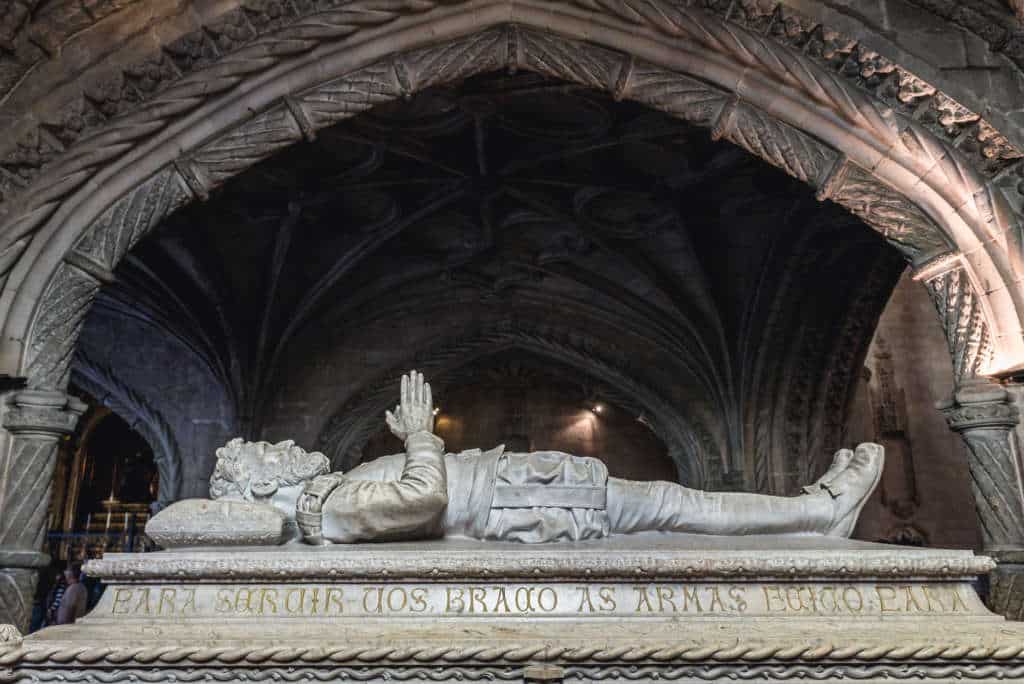
The Hieronymite Monastery is the resting place of Luís de Camões, author of the national epic Os Lusíadas (The Lusiads)
The vault is 30 meters wide and ranks among the most breakneck projects of the construction industry at the time. Many accounts speak of “exceptional hardship” and many deaths among the workers. It and the walls feature royal symbols and floral motifs. In the left arm of the transept rest the remains of Cardinal Dom Henrique, as well as the children of King Manuel I. On the opposite side is the tomb of King Sebastian and the descendants of King John III. The focal point of the place is definitely the main altar, which brings Mannerist features to the temple.
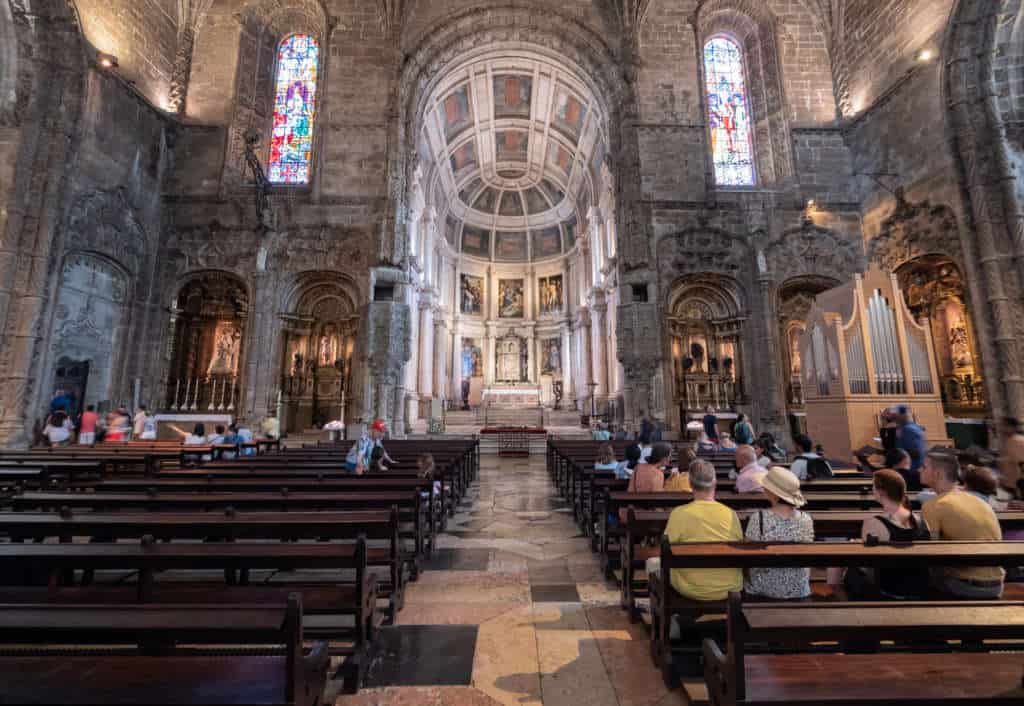
Between the arches supported by marble statues of elephants lie the tombs of notable Portuguese. In the immediate vicinity of the church is the magnificently decorated sacristy, which exemplifies carpentry and furniture making of the highest order. In addition to the sculptural artistry, dozens of oil paintings on boards by Simão Rodrigues can be seen there.
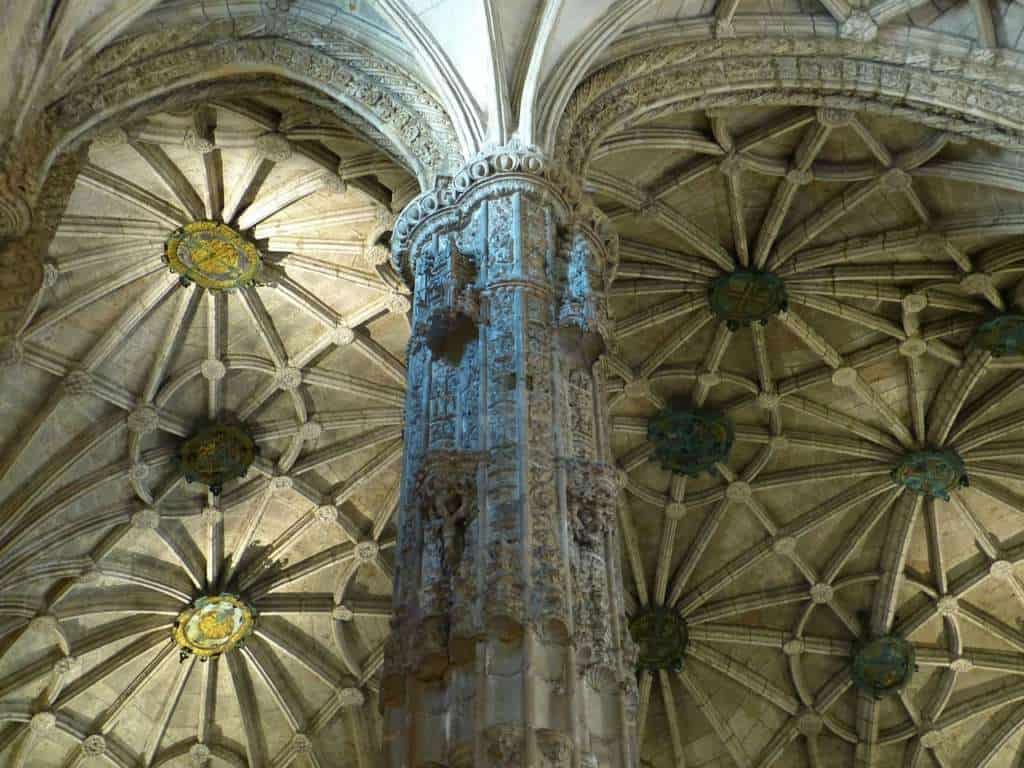
Jerónimos Monastery

Within the monastery itself, there are several buildings of particular interest to tourists. The main dormitory is a two-story, richly decorated arcaded house that surrounds a square-plan square with cloisters. It is crowned by sculptural works with biblical as well as floral motifs. In the refectory one can see elements of the azulejo style, which harmonize perfectly with the paintings of Avelar Rebelo.

The cloisters in the Hieronymite monastery resemble those found in Batalha or Alcobaca
Also noteworthy is the chapter house, which was intended as a gathering place for monks during general assemblies. However, this never happened, as the ceiling of the room was not completed until the 19th century. Here rested the remains of presidents, writers and other distinguished Portuguese until the completion of the church of Santa Engrácia, which became the new pantheon for elected citizens.
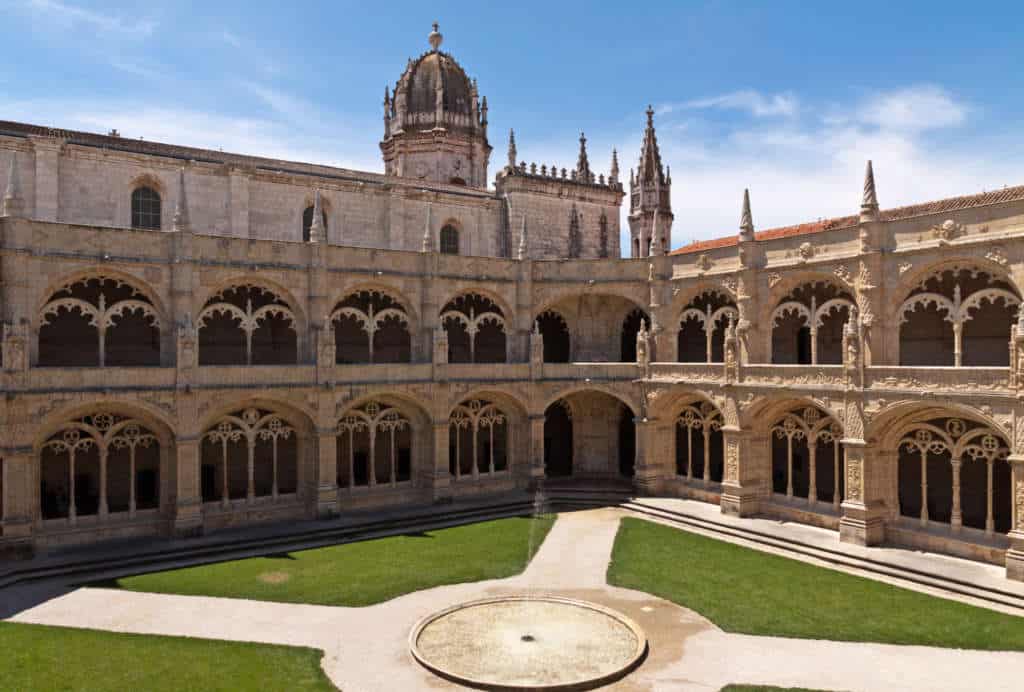
Sightseeing Jerónimos Monastery and prices
Visiting the Church of the Virgin of Belém is free. There is a queue leading to it from the right side of the building – usually the “longer” one. If you want to avoid a long stand, I recommend going to Belém during the week, preferably in the morning or afternoon.

The Hieronymite monastery is a representative of the Manueline style
2023 ticket prices

The monastery is distinguished by its beautiful, rich ornamentation
There is a fee to visit the monastery, the cloister and the sacristy. I recommend purchasing ticket online (click here) or at another Belem attraction (Belem Tower or CBB Belem) – if you have one, you can queue up separately and get in very quickly. It is currently unavailable to purchase tickets online directly at patrimoniocultural.gov.pt , however, group tickets can be ordered by email.
- Wejście do kościoła – free
- Entrance to the monastery/cloisters – 10 euro
- Combined ticket for Hieronymite Monastery and Archaeological Museum – 12 euro
- Students, children and over 65 years of age – 50% discount
- Children under 12 years of age – bezpłatnie
- Bilet rodzinnyFamily ticket (group of min. 4 people – 2 adults and 2 children) – 50% discount
- Lisboa Card – free
If you buy tickets on the spot at the monastery, it’s worth buying a ticket to the nearby Belem Tower – so you can bypass the queues on the way to the ticket office.
Nearby Jerónimos Monastery
Belém is not only the Hieronymite monastery. What else is worth seeing? In the monastery building, at its southwestern end, you’ll find the Maritime Museum, filled to the brim with exhibits related to the Portuguese Thalassocracy era – ship miniatures, maps, navigational instruments (such as astrolabes and telescopes) and weapons brought back from the Portuguese colonies.
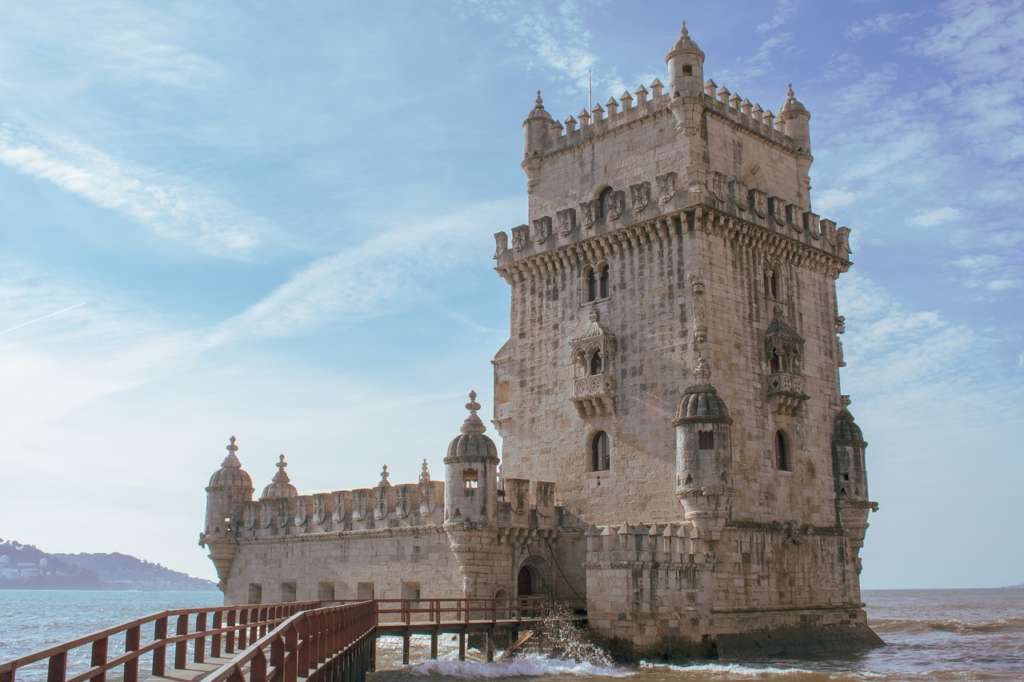
In turn, opposite the temple itself is located the Belem Tower, formerly guarding the city in the middle of the Tagus River, today, accessible directly from the city. Next to the Belem Tower is a monument to the explorers, with a beautiful vantage point overlooking the entire district.
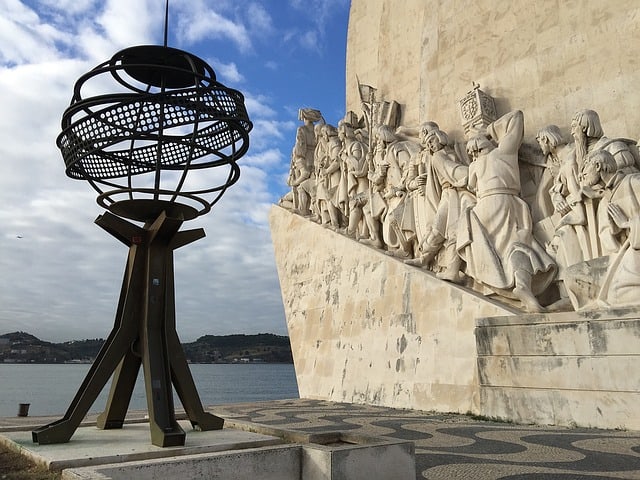
Next to the convent, there is also Lisbon’s most popular and well-known pastry shop, Pastéis de Belém, serving delicious Pastéis de Nata. I recommend grabbing them to go and then heading to the Jardim Botânico Tropical located behind the pastry shop, with one of the most beautiful collections of tropical plants in Lisbon. Once you’ve had your fill, it’s worth walking a few steps further and hitting the Carriage Museum, containing a beautiful collection of carriages and carriages of mighty men from Portugal and all over Europe.
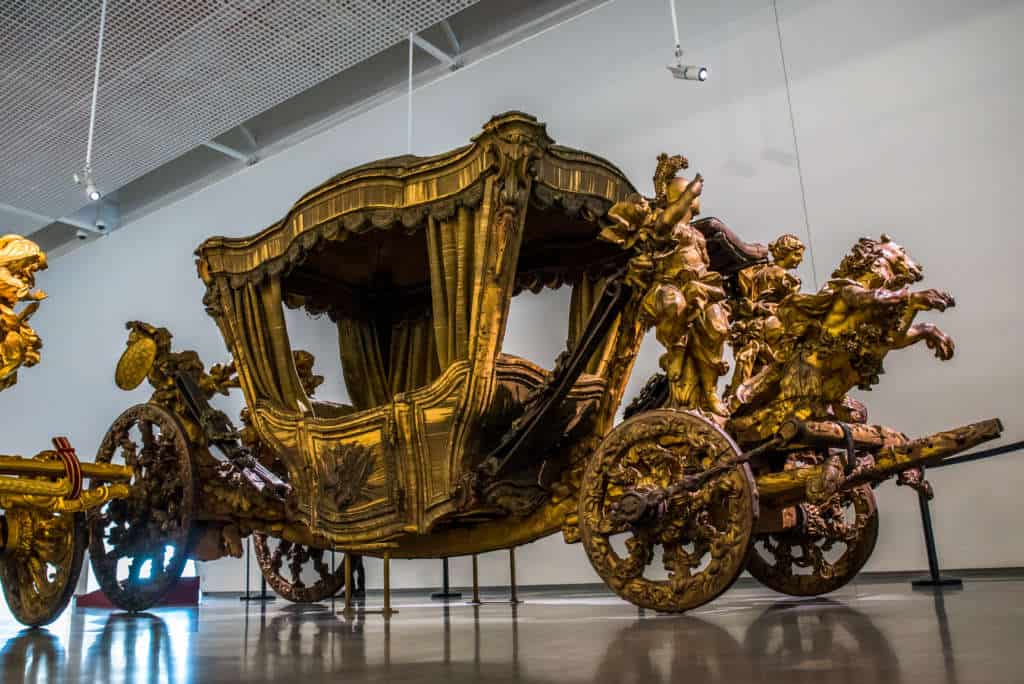
Off the tourist trail, but definitely worth a visit, is the Ajuda Botanical Garden and Ajuda Palace. Both are about a 15-minute walk from the carriage museum.

How to get to the Jerónimos Monastery?
The Belém district is very well connected with the center of Lisbon, Almada or Cascais.
- Opposite the monastery is the streetcar stop for line 15 – “Mosteiro Jerónimos”. It can be reached from Praça do Comercio.
- Right next to the Hieronymite Monastery there are bus stops, buses 79B, 201, 714, 727, 728, 729 and 751 stop there.
- A 10-minute walk from the monastery is the train station – the “Belém” station. It can be reached from any station on the line to Cascais – Cais do Sodre, Estoril or Cascais.
For checking public transportation locally, I invariably recommend the moovit.com app
